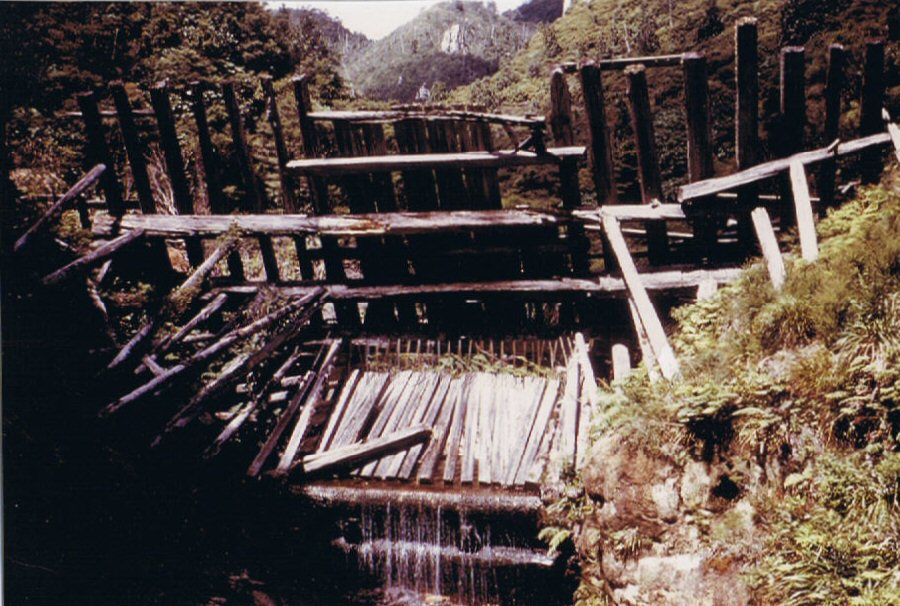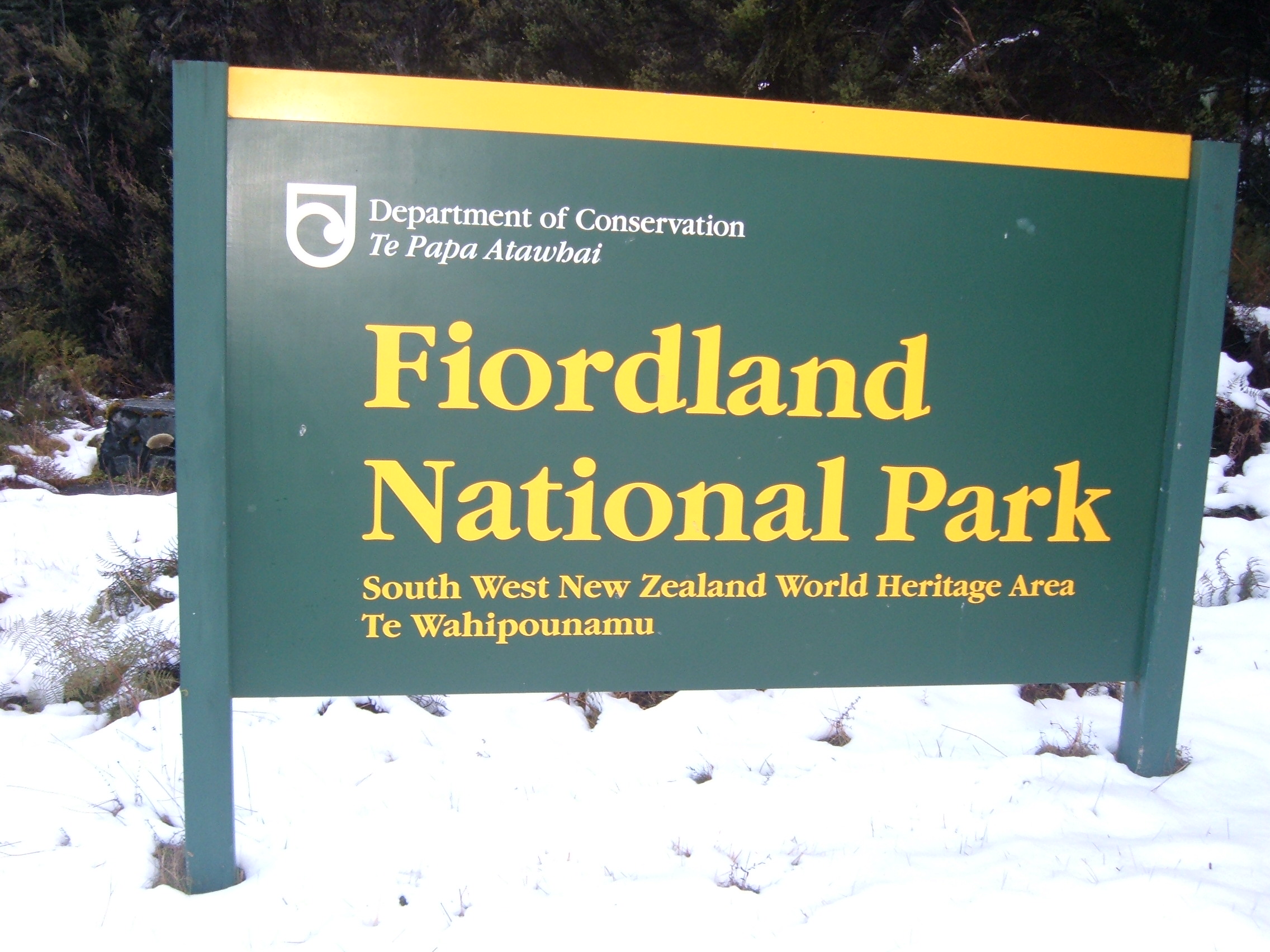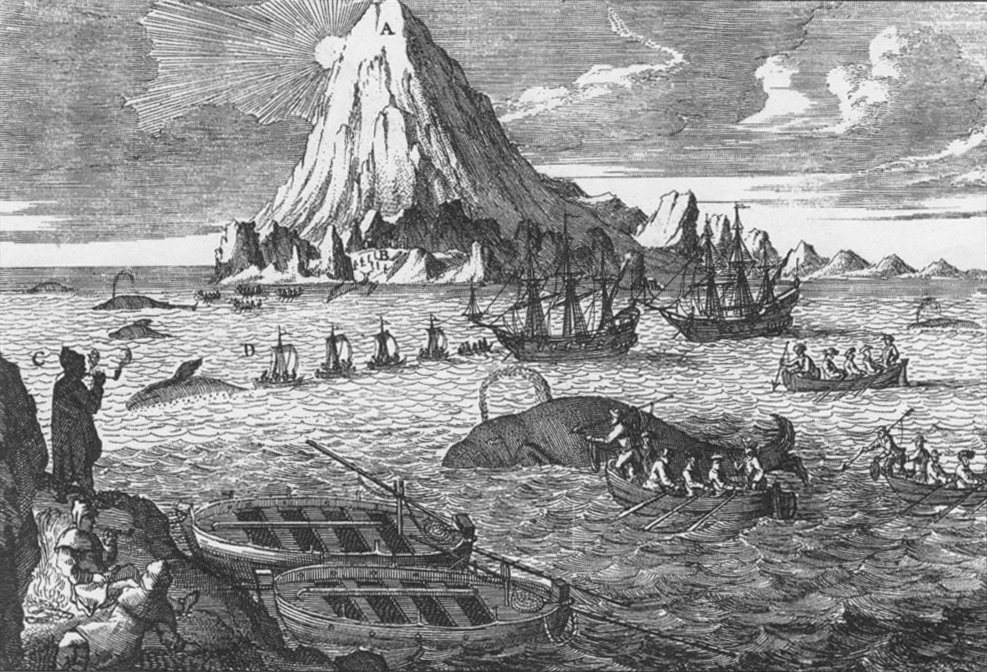|
Whangaparapara
Whangaparapara is a harbour and coastal community on Great Barrier Island in New Zealand's Hauraki Gulf. Europeans settled Whangaparapara for mining, timber milling and whaling. It is now a tourism and boating spot, where boats can pick up fuel and water. History European settlers felled native forests, establishing tramlines to extract the timber to the harbour where it was transported to Auckland for milling. The tramline is now part of a heritage trek. Gold and silver were discovered in the area in the late 19th century. The Oreville stamping ore-crushing battery is still visible from the road. The Kauri Timber Company sawmill was established in the early 20th century, to process logs from the Coromandel Peninsula and Northland Region. For a while it was the largest mill in the southern hemisphere. New Zealand's last whaling station operated on the northern side of the Whangaparapara Harbour from 1957 to 1962. It is also still visible. The anchor of the SS Wiltshire, whic ... [...More Info...] [...Related Items...] OR: [Wikipedia] [Google] [Baidu] |
Whangaparapara From Mount Hobson (cropped)
Whangaparapara is a harbour and coastal community on Great Barrier Island in New Zealand's Hauraki Gulf. Europeans settled Whangaparapara for mining, timber milling and whaling. It is now a tourism and boating spot, where boats can pick up fuel and water. History European settlers felled native forests, establishing tramlines to extract the timber to the harbour where it was transported to Auckland for milling. The tramline is now part of a heritage trek. Gold and silver were discovered in the area in the late 19th century. The Oreville stamping ore-crushing battery is still visible from the road. The Kauri Timber Company sawmill was established in the early 20th century, to process logs from the Coromandel Peninsula and Northland Region. For a while it was the largest mill in the southern hemisphere. New Zealand's last whaling station operated on the northern side of the Whangaparapara Harbour from 1957 to 1962. It is also still visible. The anchor of the SS Wiltshire, whic ... [...More Info...] [...Related Items...] OR: [Wikipedia] [Google] [Baidu] |
Great Barrier Island
Great Barrier Island ( mi, Aotea) lies in the outer Hauraki Gulf, New Zealand, north-east of central Auckland. With an area of it is the sixth-largest island of New Zealand and fourth-largest in the main chain. Its highest point, Mount Hobson, is above sea level.Great Barrier Island Aotea page on the DOC website (from the . Accessed 2008-06-04.) The is the |
Hauraki Gulf
The Hauraki Gulf / Tīkapa Moana is a coastal feature of the North Island of New Zealand. It has an area of 4000 km2, Zeldisl, J. R. et al. (1995) Salp grazing: effects on phytoplankton abundance, vertical distribution and taxonomic composition in a coastal habitat. Marine Ecology Progress Series, Vol. 126, p 267-283 and lies between, in anticlockwise order, the , the Hauraki Plains, the Coromandel Peninsula, and [...More Info...] [...Related Items...] OR: [Wikipedia] [Google] [Baidu] |
Auckland
Auckland (pronounced ) ( mi, Tāmaki Makaurau) is a large metropolitan city in the North Island of New Zealand. The most populous urban area in the country and the fifth largest city in Oceania, Auckland has an urban population of about It is located in the greater Auckland Region—the area governed by Auckland Council—which includes outlying rural areas and the islands of the Hauraki Gulf, and which has a total population of . While Europeans continue to make up the plurality of Auckland's population, the city became multicultural and cosmopolitan in the late-20th century, with Asians accounting for 31% of the city's population in 2018. Auckland has the fourth largest foreign-born population in the world, with 39% of its residents born overseas. With its large population of Pasifika New Zealanders, the city is also home to the biggest ethnic Polynesian population in the world. The Māori-language name for Auckland is ', meaning "Tāmaki desired by many", in ref ... [...More Info...] [...Related Items...] OR: [Wikipedia] [Google] [Baidu] |
Auckland Council
Auckland Council ( mi, Te Kaunihera o Tāmaki Makaurau) is the local government council for the Auckland Region in New Zealand. It is a territorial authority that has the responsibilities, duties and powers of a regional council and so is a unitary authority, according to the Local Government (Auckland Council) Act 2009, which established the council. The governing body consists of a mayor and 20 councillors, elected from 13 wards. There are also 149 members of 21 local boards who make decisions on matters local to their communities. It is the largest council in Oceania, with a $3 billion annual budget, $29 billion of ratepayer equity, and 9,870 full-time staff as of 30 June 2016. The council began operating on 1 November 2010, combining the functions of the previous regional council and the region's seven city and district councils into one "super council" or "super city". The council was established by a number of Acts of Parliament, and an Auckland Transition Agency, also ... [...More Info...] [...Related Items...] OR: [Wikipedia] [Google] [Baidu] |
Coromandel Peninsula
The Coromandel Peninsula ( mi, Te Tara-O-Te-Ika-A-Māui) on the North Island of New Zealand extends north from the western end of the Bay of Plenty, forming a natural barrier protecting the Hauraki Gulf and the Firth of Thames in the west from the Pacific Ocean to the east. It is wide at its broadest point. Almost its entire population lives on the narrow coastal strips fronting the Hauraki Gulf and the Bay of Plenty. In clear weather the peninsula is clearly visible from Auckland, the country's biggest city, which lies on the far shore of the Hauraki Gulf, to the west. The peninsula is part of the Thames-Coromandel District of the Waikato region. Origin of the name The Māori name for the Coromandel comes from the Māori legend of Māui and the Fish, in which the demigod uses his hook to catch a great fish from the depths of te Moana-Nui-a-Kiwa (The Pacific Ocean). ''Te Tara-O-Te-Ika-A-Māui'' means 'The spine of Māui's fish'. The spine can be understood to be t ... [...More Info...] [...Related Items...] OR: [Wikipedia] [Google] [Baidu] |
Northland Region
The Northland Region ( mi, Te Tai Tokerau) is the northernmost of New Zealand's 16 local government regions. New Zealanders sometimes refer to it as the Winterless North because of its mild climate all throughout the year. The main population centre is the city of Whangārei, and the largest town is Kerikeri. At the 2018 New Zealand census, Northland recorded a population growth spurt of 18.1% since the previous 2013 census, placing it as the fastest growing region in New Zealand, ahead of other strong growth regions such as the Bay of Plenty (2nd with 15%) and Waikato (3rd with 13.5%). Geography The Northland Region occupies the northern 80% (265 km) of the 330 km Northland Peninsula, the southernmost part of which is in the Auckland Region. Stretching from a line at which the peninsula narrows to a width of just 15 km a little north of the town of Wellsford, Northland Region extends north to the tip of the Northland Peninsula, covering an area of 13,940&nb ... [...More Info...] [...Related Items...] OR: [Wikipedia] [Google] [Baidu] |
Department Of Conservation (New Zealand)
The Department of Conservation (DOC; Māori: ''Te Papa Atawhai'') is the public service department of New Zealand charged with the conservation of New Zealand's natural and historical heritage. An advisory body, the New Zealand Conservation Authority (NZCA) is provided to advise DOC and its ministers. In addition there are 15 conservation boards for different areas around the country that provide for interaction between DOC and the public. Function Overview The department was formed on 1 April 1987, as one of several reforms of the public service, when the '' Conservation Act 1987'' was passed to integrate some functions of the Department of Lands and Survey, the Forest Service and the Wildlife Service. This act also set out the majority of the department's responsibilities and roles. As a consequence of Conservation Act all Crown land in New Zealand designated for conservation and protection became managed by the Department of Conservation. This is about 30% of New ... [...More Info...] [...Related Items...] OR: [Wikipedia] [Google] [Baidu] |
Kauri Dieback
Kauri dieback is a forest dieback disease of the native kauri trees (''Agathis australis'') of New Zealand that is suspected to be caused by the oomycete ''Phytophthora agathidicida.'' Symptoms can include root rot and associated rot in a collar around the base of the tree, bleeding resin, yellowing and chlorosis of the leaves followed by extensive defoliation, and finally, death. Etymology ''Phytophthora'' (from Greek (), "plant" and (), "destruction"; "the plant-destroyer") is a genus of plant-damaging oomycetes (water moulds), whose member species are capable of causing enormous economic losses on crops worldwide, as well as environmental damage in natural ecosystems. The species name ''agathidicida'' means "kauri killer", from the genitive noun ''agathid''- (meaning "of the kauri genus ''Agathis''") and the Latin suffix -''cide'' (from the verb , to kill). Disease Symptoms of kauri dieback include root rot of both fine-feeder and larger structural roots; a collar ... [...More Info...] [...Related Items...] OR: [Wikipedia] [Google] [Baidu] |
Beaches Of The Auckland Region
A beach is a landform alongside a body of water which consists of loose particles. The particles composing a beach are typically made from rock, such as sand, gravel, shingle, pebbles, etc., or biological sources, such as mollusc shells or coralline algae. Sediments settle in different densities and structures, depending on the local wave action and weather, creating different textures, colors and gradients or layers of material. Though some beaches form on inland freshwater locations such as lakes and rivers, most beaches are in coastal areas where wave or current action deposits and reworks sediments. Erosion and changing of beach geologies happens through natural processes, like wave action and extreme weather events. Where wind conditions are correct, beaches can be backed by coastal dunes which offer protection and regeneration for the beach. However, these natural forces have become more extreme due to climate change, permanently altering beaches at very rapi ... [...More Info...] [...Related Items...] OR: [Wikipedia] [Google] [Baidu] |
Populated Places In The Auckland Region
Population typically refers to the number of people in a single area, whether it be a city or town, region, country, continent, or the world. Governments typically quantify the size of the resident population within their jurisdiction using a census, a process of collecting, analysing, compiling, and publishing data regarding a population. Perspectives of various disciplines Social sciences In sociology and population geography, population refers to a group of human beings with some predefined criterion in common, such as location, race, ethnicity, nationality, or religion. Demography is a social science which entails the statistical study of populations. Ecology In ecology, a population is a group of organisms of the same species who inhabit the same particular geographical area and are capable of interbreeding. The area of a sexual population is the area where inter-breeding is possible between any pair within the area and more probable than cross-breeding with in ... [...More Info...] [...Related Items...] OR: [Wikipedia] [Google] [Baidu] |
Whaling Stations In New Zealand
Whaling is the process of hunting of whales for their usable products such as meat and blubber, which can be turned into a type of oil that became increasingly important in the Industrial Revolution. It was practiced as an organized industry as early as 875 AD. By the 16th century, it had risen to be the principal industry in the Basque coastal regions of Spain and France. The industry spread throughout the world, and became increasingly profitable in terms of trade and resources. Some regions of the world's oceans, along the animals' migration routes, had a particularly dense whale population, and became the targets for large concentrations of whaling ships, and the industry continued to grow well into the 20th century. The depletion of some whale species to near extinction led to the banning of whaling in many countries by 1969, and to an international cessation of whaling as an industry in the late 1980s. The earliest known forms of whaling date to at least 3000 BC. Coastal ... [...More Info...] [...Related Items...] OR: [Wikipedia] [Google] [Baidu] |
.jpg)


_p225_AUCKLAND%2C_NEW_ZEALAND.jpg)







